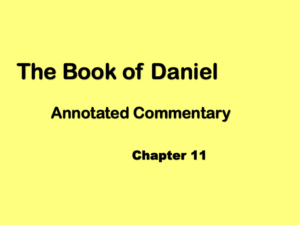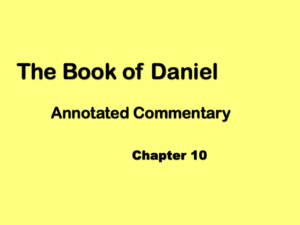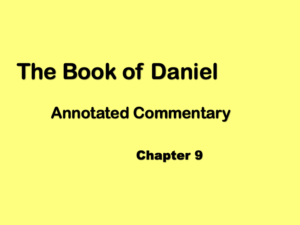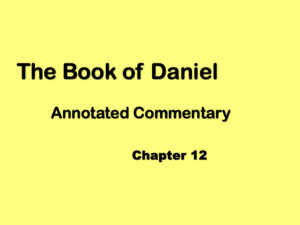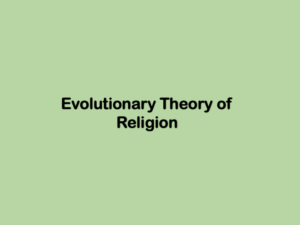Daniel 7: 7-8 The Fourth Beast and the Antichrist
In Daniel’s vision of chapter 7, four beasts arise out of the seas, which represent four kingdoms of men. These kingdoms are violent and agents of chaos, but God uses them to judge Israel. In this post, we discuss the fourth kingdom, a kingdom more violent than any other in history. We also learn of an individual known as the Antichrist.
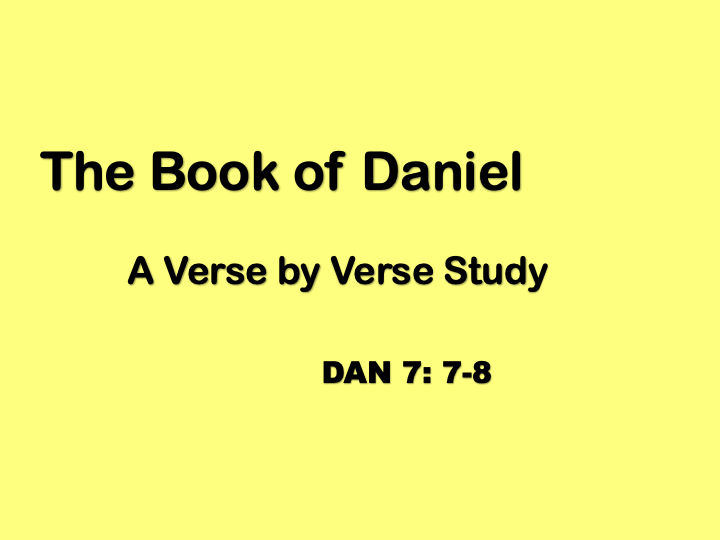
The Fourth Kingdom: The Kingdom of the Beast
In Nebuchadnezzar’s dream in chapter 2, the statue’s legs of iron transitioned into the feet of iron and clay. Most scholars agree the iron represented Rome, but are divided on the interpretation of the iron and clay. Daniel’s vision in chapter 7 there is no corresponding transition from iron to iron and clay. Instead, Daniel sees a single, terrible fourth beast in his vision.
“After this I saw in the night visions, and, behold, there was a fourth animal, awesome and powerful, and exceedingly strong. It had great iron teeth. It devoured and broke in pieces, and stamped the residue with its feet. It was different than all the animals that were before it; and it had ten horns.”
Daniel 7: 7
Unlike the previous three beasts, no animal is used to describe the fourth beast. Instead it remans nameless and without description; we are only told is is “awesome and powerful, and exceedingly strong.” This language reflects the language of chapter 2, where we were told the fourth kingdom “will be as strong as iron.” The fact that the animal has “great iron teeth,” also reinforces the link between chapters 7 and 2.
The violent imagery from chapter 2 is also continued. In chapter 2, we were told “…iron breaks in pieces and subdues all things; and as iron that crushes all these, it will break in pieces and crush” and now in chapter 7, the fourth animal “devoured and broke in pieces, and stamped the residue with its feet.”
Taken together, the two chapters paint a picture of a kingdom bent on destruction. As we discussed in chapter 2, Rome was a violent kingdom with a history of utterly destroying its enemies, such as Carthage, but Rome also was a great spreader of civilization, building roads, aqueducts and buildings that still exist today. Any reference to building, on constructive imagery is lacking in the two descriptions of the fourth kingdom. Instead, it seems to be entirely descructive.
Just as the description of Rome as “iron mixed with clay,” seemed to describe Rome, but also not Rome, the violent imagery also seems to describe Rome, but not Rome. Again, this pattern seems to be an example of partial fulfillment, where prophecy is partially fulfilled at one point in time, but either was fully fulfilled at a later time, or will be fully fulfilled at a future time. One might call this idea of the fourth kingdom as “Rome, but not yet.” This is a pattern that will be continued throughout Daniel. Rome did indeed fulfill many of the criteria of the prophecies in Daniel, but there may be a second, yet future manifestation of Rome will be more violent, more destructive.
Daniel also makes a point of stating the fourth kingdom is different than all the other kingdoms preceded it. “It was different than all the animals that were before it.” Daniel doesn’t specify what is different about the fourth kingdom, so we are left to our imagination. It may be a system of government, or it may be the violent, destructive nature of the kingdom as we already mentioned. One could make the argument that Rome was not significantly different that any of the kingdoms that came before, it just had a great range of conquered territory.
We then get a new detail in Daniel 7 that was not covered in chapter 2. Daniel tells us the beast will have ten horns. In the Bible, a horn is often used as a symbol of power, especially of a ruler. In Psalm 132, for example, the psalmist references the messianic line of David as a future ruler.
“There I will make the horn of David to bud.”
Psalm 132: 17
Ezekial also mentions a ruling horn from the line of David.
“In that day I will cause a horn to sprout for the house of Israel, and I will give you the opening of the mouth among them. Then they will know that I am Yahweh.”
Ezekiel 29: 21
Using the Bible to interpret the Bible, we can guess these ten horns will be rulers of the fourth kingdom, and in fact this is confirmed later in the chapter 7, in verse 24.
The Little Horn and the Antichrist
Next the text describes another horn, a little horn, comes from amongst the ten horns and plucks “up by the roots” three of the rulers.
“I considered the horns, and behold, there came up among them another horn, a little one, before which three of the first horns were plucked up by the roots: and behold, in this horn were eyes like the eyes of a man, and a mouth speaking great things.
Daniel 7: 8
Using the same horn imagery, this little horn is another ruler, perhaps separate from the first ten rulers. The Aramaic word used for rooted up is equivalent to the Hebrew word ‘aqer. In other places in the Biblical text, “rooted up” is used in context of a military conquest.
For Gaza will be forsaken, and Ashkelon a desolation. They will drive out Ashdod at noonday, and Ekron will be rooted up (te’a-qer).
Zephaniah 2: 4
This image painted is a violent overthrow of three of the rulers, perhaps through assassination, a coup or military conqquest. Although the title is not used here, scholars are in agreement the little horn is a reference to the antichrist. The term antichrist is only used five places in the Bible, all in the epistles, or letters, written by John.
Little children, these are the end times, and as you heard that the Antichrist is coming, even now many antichrists have arisen. By this we know that it is the final hour. They went out from us; for if they had belonged to us, they would have continued with us. But they left, that they might be revealed that none of them belong to us. You have an anointing from the Holy One, and you all have knowledge. I have not written to you because you don’t know the truth, but because you know it, and because no lie is of the truth. Who is the liar but he who denies that Jesus is the Christ? This is the Antichrist, he who denies the Father and the Son. Whoever denies the Son, the same doesn’t have the Father. He who confesses the son has the Father also.
1 John 2: 18-23
John defines the Antichrist as anyone who denies Jesus was the messiah (christ is the Greek word for messiah), denies that Jesus and God are one, or in other words, that Jesus was divine. In Daniel, however, the little horn is equated with the spirit of the antichrist described in John’s epistles. In this case, the antichrist also references that this ruler will oppose Christ and God, seeking to supplant their influence. Hence this ruler has been called the Antichrist, although he is never labelled that way in the Bible.
The small horn is described as having “eyes like the eyes of a man” and “a mouth speaking great things.” The “eyes” are interpreted as meaning either the Antichrist will be exceptionally clever, or perhaps meaning he will be prideful. Both are probably true. Perhaps the “great things” are boastful, anti-God statements. Often in the Bible, when men are described as “great,” it doesn’t mean great, but rather they are prideful and speak of themselves as “great.” We do know from other Revelation and 2 Thessalonians that the Antichrist will indeed speak blasphemous things against God.
Next, Daniel’s vision moves to the throne room of God, where a court of judgement is set up.
Previous: Daniel 7: 1-6 The Four Beasts
Next: Daniel 7: 9-14 The Throne Room of God
